Towards a museum for the 22nd Century: A conversation with Katya García-Antón
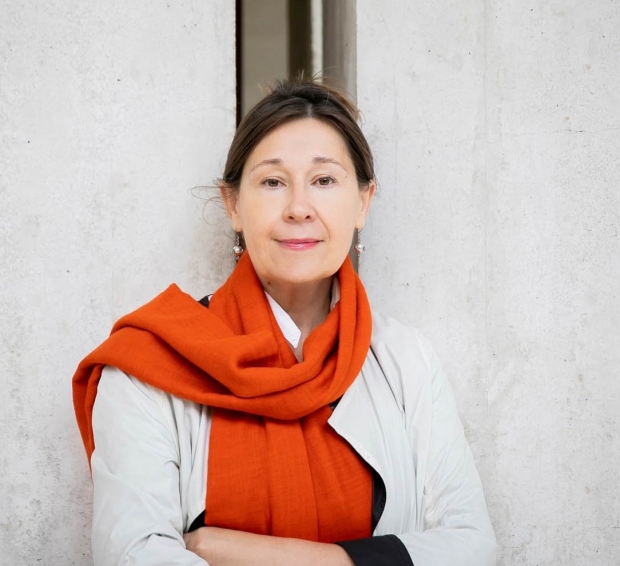
Interview with Katya García-Antón, the director of the Nordnorsk Kunstmuseum, Tromsø 2023.
By Marion Bouvier, Hakapik
Following a couple of troubled years after the museum board fired former director Jérémie McGowan in 2020, the Nordnorsk Kunstmuseum finally got a new director and chief curator on board in august 2022. The museum’s choice landed on Katya García-Antón, a 56-year-old British-Spanish art historian and curator.
García-Antón has distinguished herself for her contribution as curator of the Sámi Pavilion at the Venice Biennale in 2022, director of OCA (the Office for Contemporary Art Norway) from 2014 to 2022, and before that, director of the Centre d’Art Contemporain in Geneva (Switzerland) for 8 years. To say that García-Antón’s résumé is impressive would be an understatement. Yet, for all the prestige of her past and present employment, García-Antón appears remarkably humble and down-to-earth, and she seems to be cultivating an almost ingenuous curiosity to the world around her.
One new director, three mandates and as many challenges
Katya García-Antón has clearly thought through the direction her work will take. The museum director highlights the importance of connecting with her staff to build the adequate systems organization to tackle the mandates that the museum has been given.
“The Ministry of Culture has given us some clear directives on some of those tasks, and Svalbard is one of them. Opening a branch for the museum in Bodø is another; and working at a higher level across the whole of the north, across all of the municipalities is a third.
The first approach really has been a deep dive into the museum, looking at systems, trying to strengthen systems together with the team, strengthening human resources so that we can respond to some of these mandates.”
García-Antón’s diplomatic way of speaking nevertheless underlines that she has a keen understanding of the politics she is dealing with: the museum’s new directives when it comes to its involvement in Svalbard and Bodø have drawn some criticism, and obviously require a tentacular work that will stretch the museum’s resources and personnel further.
Of the Svalbard plans, García-Antón explains that the Nordnorsk Kunstmuseum has been tasked by the Ministry of Culture to provide the program and mediation for Nordover, an already existing but fairly-new culture house in Longyearbyen. The museum is also a key partner in Artica Svalbard, nominating artists and curating any projects emerging from those residencies. The government’s drive to develop economic activity in Svalbard, a key geopolitical place in the Arctic, involves tourism and culture –and one can feel that the museum has become entangled in a project that puts it in the difficult position to create exhibitions while trying to maintain an environmentally-friendly footprint, something that is one of the major themes of García-Antón’s approach. She recounts being on a research boat near Svalbard and hearing the sounds of icebergs melting: “That’s the sound of climate change,” the boat’s captain commented. “It was a spine-chilling moment,” comments the museum director. She doesn’t shy away from addressing the difficulties that this mandate entail.
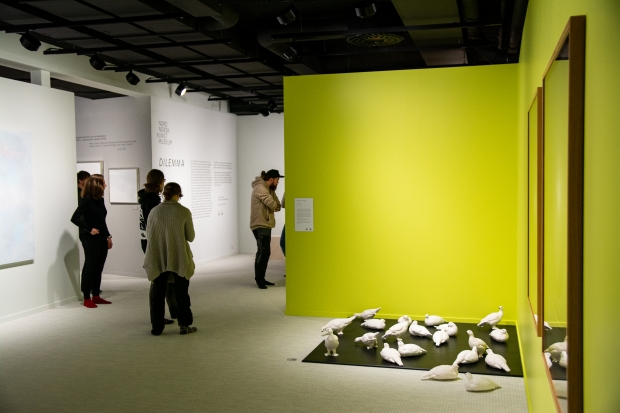
“How can we be in Svalbard, and mobilize our presence there in a meaningful way? What diverse stories of the Arctic can we generate: for example the black histories of the Arctic? And how can we also try to secure that the ways we do that are as low in carbon footprint as possible? And how are we connected with the community in Longyearbyen, what is important to them? How can Nordnorsk Kunstmuseum be relevant to them working with their concerns, with their creative practices and serving their community?
I hope very much that we're not going to be the kind of institution that is going to fly back and forth, back and forth, with endless crates of artworks.”
Her proposed methodology is therefore to focus as much as possible on the local community, to rely more heavily on intangible media formats (video, sound), as well as to create content that will be meaningful to locals as well as tourists. This line of thought is at the heart of García-Antón’s philosophy, and she speaks similarly of how she envisions the opening of the Bodø branch.
“One of the main things since I have arrived has been to be in Bodø, to connect with the Bodø community, to connect with the different cultural and creative actors and institutions there.
One of the big things that has emerged in just these discussions, is a real wish from the community to have a long-lerm, sustained mediation approach at various levels, and to have a building dedicated to visual arts.”
One additional aspect of the work in Bodø is a focus on the youth. García-Antón explains that her discussions with the local community have highlighted the lack of arts education in schools and the lack of tools for youth to “read” arts and creative practices. In addition, the brain drain and “youth drain” that the North is experiencing means that there is a responsibility for art institutions to provide some of these tools and mediation. She also suggests reinforcing the networks and opportunities for museum workers, for example by training future conservators, who could stay in the North instead of having to go to Oslo. More generally, working with the youth is also a priority that García-Antón highlights.
“We would really love to work in a kind of larger scale level across the whole of the North with members of the youth from different communities and bringing them close to all the structural levels of the museum.”
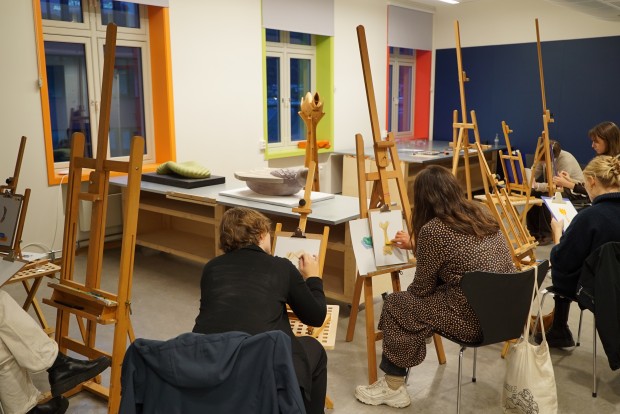
A fascinating journey ahead: the indigenization of Nordic museums
Beyond the mandates given to her as she takes the lead of the museum, Katya García-Antón is on a mission that one could almost call revolutionary: to transform the ways museums collect, conserve, display and communicate on art. For those familiar with her work at OCA, this will come as no surprise that García-Antón has at heart to anchor the museum in its geographical, cultural and social environment, and giving its rightful place to Sámi art, duodji and artists.
“The museum is located in Sápmi, on Indigenous land, and that needs to be a guiding principle in everything that we do. It's a museum on Indigenous land, it's a museum in the North, it's a museum for the North, but it's also a museum that is part of the Arctic region and part of the circumpolar region.
So how does the museum build its vision and operations, the knowledge and resources that it has and must share, and the voices that it should showcase on all of those levels. Across four municipalities, a broad diversity of communities and a land the size of England. We don't think there is another museum in Norway with that vast mandate (aside from the National Museum). It's a big task! But at the same time, it's such an exciting one. And that's why I'm so motivated to be in this museum, because we think we have an opportunity to rethink how museums work, and what this means in a very special part of the world where so many of the really important issues of the world are being discussed and played out.”
Her reflection goes several steps further, as she highlights the interconnectedness of issues related to the historical erasure of Indigenous artists and of women in Western collections, colonization, and the environmental challenges our world faces. During her first weeks as museum director, she looked at the analysis of the museum’s collection and previous shows. Unsurprisingly, what came out was a clear imbalance, with only 28% of the collection representing female artists, and only 6.6% of the collections being Sámi.
García-Antón is adamant that these imbalances need to be addressed, and that this will be long-term, structural transformations requiring deep commitment –and some hard battles to be fought along the way.
“Whenever change happens, there is always a little bit of pushback, especially if communities feel they are losing their central space. And sometimes if you make change happen too quickly, that can create a very big pushback. On the other hand, we're only on this planet for a short amount of time, and I think each of us have a responsibility to do as much as we can to collectively make those transformations.
In my experience, it's so important to use both words and action. Going to meetings at a high level with municipalities, counties, and ministries, and using words like ‘Sápmi’; it might now seem quite basic, but when I, as a newcomer to Norway, started doing it in 2014, the tension around it was palpable. Same with using the word Indigenization. It was important to learn to talk and activate things in a decolonizing and Indigenising manner. At the time, you could see that this was not often heard in this context. Insisting on words, because words have power, is essential. And that must be followed by actions.
On top of that, decolonization is not something that we as non-Indigenous people can just wake up one morning and say, we've done it. Decolonization is a little bit like struggling for democracy. You can never stop. Because the process itself is the goal.”
A very interesting aspect of García-Antón’s proposed contribution to the indigenization of museums is the creation of an “Indigenous protocol”. This is not a new idea in itself, as other countries around the world, notably Canada, have started work on this years ago. I ask García-Antón to explain more concretely how an Indigenous protocol could look like for the Nordnorsk Kunstmuseum.
“What would be the guidelines that we would follow when restoring Sámi works in our collection, for example, a piece of duodji? Those guidelines could be, for example, that we're not going to use this chemical, we're going to use this plant instead because that's the way it's been done by Sámi elders for good reason, and it's the knowledge that's been transferred over time.
That guideline might also be a social guideline. The classic Western way of building a collection and of conserving it has been to bring objects in, which then come into the so-called safety of a museum where they are analyzed, interpreted, and conserved usually so that they don't change. But what if – and now I'm hoping to consider an Indigenous perspective – what if those objects had a different life? They had the museum white cube life, but also a community life and that the museum engaged and committed in enabling this other life, this community life, to exist?”
She insists as well on the process being the creation and implementation of such an Indigenous protocol.
“We need to reach out to Sámi elders, to duojár, to other Sámi institutions and build our museum protocol as a partnership together with them, as we have started.
Such an Indigenous protocol could also become an advocacy tool for how other non-Indigenous museums work. But to make it we need a very close knowledge-sharing dialogue, with equal partnerships where everything is credited and everything is paid for; because when somebody's coming in and offering advice on how to do something, they’re bringing in a knowledge that's been transmitted over generations, it has great value, and it's a collective knowledge. It doesn't belong to anybody. It can't then be appropriated by the museum."
Underneath García-Antón’s soft-spoken manners, there is clear resolve to tackle things without waiting for change to happen. When I ask her how she plans to go about making these changes reality in northern Norway, her answer is unequivocal.
“We just start and we push and learn along the way because there is no time to be lost.”
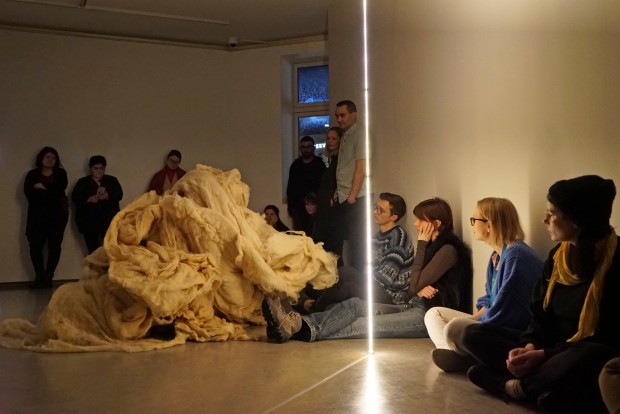
Museums as places of care and health
As I ask García-Antón about the place of crafts and duodji in the museum’s collections, she elaborates on the historical division that has been created between “daidda”, a word that describes visual art in Sámi, and “duodji”, which traditionally described the Sámi “crafts”. She situates the creation of the concept of “daidda” during the 70s by the artist association known as “Mázejoavku” – on which she edited a book of the same name during her years at OCA.
This revitalization of Sámi arts through “daidda”, using materials and formats more typically associated with Western art, also brought some challenges: a division was conceptually introduced between dáiddár (art practitioner) and duojár (duodji practitioner), which, to a certain extent, relegated duodji to the category of crafts in the eyes of the Nordic art world. García-Antón intends to set the record straight on that matter, especially since it has implications for how duodji should be collected and presented in museums.
“Craft cannot even begin to explain what duodji is: duodji is a meta category, a philosophy, a series of knowledges converging, a spiritual knowledge, ethics, a knowledge of materials, a knowledge of time and knowledge of what is good design and also has core value, which is that when something is well-made, it means that it has its use and it also brings beauty to it.
To think about the politics of display, the ideology behind display is so embedded in our minds. Therefore I think it is very interesting to think about the possible lives of daidda or duodji, and be very clear that when it comes into a museum space, it enters a Western museum ideology. How can we make it clearer for Sámi makers and audiences in general that this is the case, so that it's recognized and it's openly discussed? And that maybe the object and its maker may agree to be in that context, but it might also have a very different life with a very different set of epistemologies outside of that.”
So, if duodji should have its own category, and requires new solutions to be displayed and mediated to the audience, what could these be?, I ask García-Antón.
“I want to talk about this very moving new piece that Fredrik Prost made. He's a duojár, and he made a beautiful, wooden sculpture with various bone heads which are spiritual figures on the top. He describes it as a piece for meditation, for contemplation, for spiritual knowledges: gathering them, reflecting on them, revitalizing them.
Of course, the question of spiritual decolonization is a huge question. Fundamentally, I would say it is the question. It is at the core. That's where colonization started. Take away somebody's spiritual values, you take away a whole nation. That's how colonization started here, too. Through missionary and christianization activity.
This idea of Fredrik is to make a piece around which people will gather and think about those spiritual values, and share those knowledges that have been lost or repressed. To survive, the spiritual knowledge holders have had to keep their knowledges very hidden, so deep that it's hard to bring them out. Often the process of bringing them out is almost like a patchwork quilt: everybody has a little bit to contribute.”
Further, García-Antón expresses the possibility of lending artworks to communities whenever the need would arise, for example to a Sámi school. Ultimately, this line of thought also implicates rethinking the legal frameworks of museum acquisitions. A museum could become a “steward” or “guardian” of artworks whose ownership stays with their community. The future of museums, she muses, is to encompass a social role that goes beyond what Western thought has assigned to cultural institutions.
“I think museums need to be more spaces of care, spaces of health, and that includes spiritual health, as much as knowledge builders and advocacy builders.”
The 3 “P”s: on outreach and mediation
I ask García-Antón how this ambitious plan can be made reality in concrete steps. Her answer is to base all processes on the “3 Ps”: Personnel - Program - Public. She is well aware of the power that the institution she is head of holds, simply by the fact that it has a building, a budget, and a team. This power also means an opportunity to create change.
To implement change, she therefore identifies the need to transform the personnel, to include various members of different communities, who each bring their own sets of knowledge and relations to the building. The 2nd P, Program, we already discussed at length. And finally, when it comes to Public, García-Antón insists on mediation as a crucial tool: working with schools, elderly homes, community associations and continuously reaching out to various audiences.
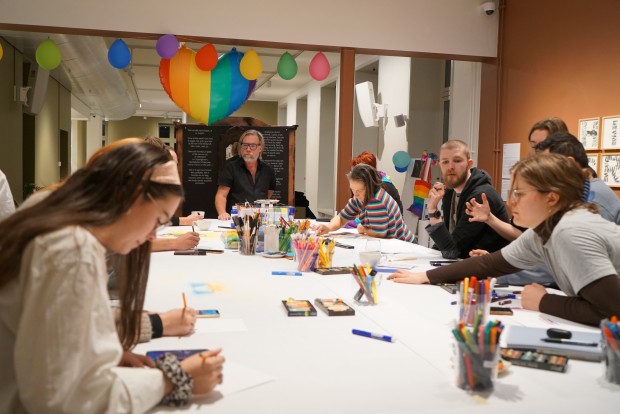
Another aspect of the museum’s mediation would be through books and reading.
“I think books are not just repositories of knowledge and places of plural voices. Books also have an emotional life to them. The quality of holding a book in your hand or being in a library and being surprised is really important.”
García-Antón mentions making more space in the museum for books, holding book-related workshops, as well as curated book programs, where, for example, different members of the communities could come and present a book that is important to them or be choosing a book that they never thought of reading before and then sharing why actually, they liked it or they didn't like it.
She also spotlights that the museum’s responsibility should be to support existing publishing houses, distribution networks and similar initiatives to promote stories from the North, such as the Sámi publishing house DAT, or the Arctic Art Book Fair, which took place in Tromsø in 2020.
Upcoming exhibitions for 2023 and 2024
Katya García-Antón gives us a sneak-peek into the first exhibitions coming up this year.
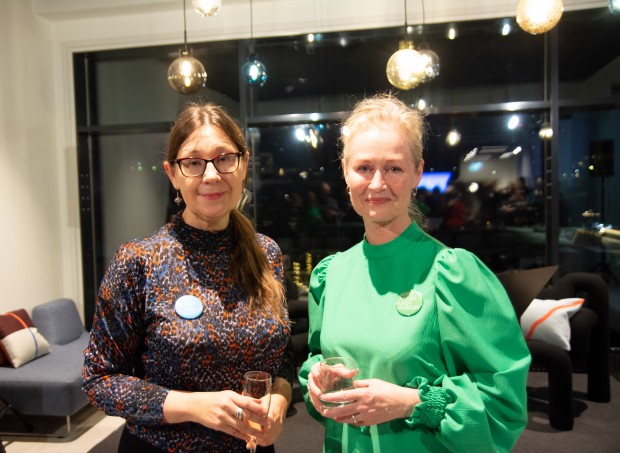
“With my fellow curators, Lise Dahl and Charis Gullickson, we sat down together and we looked at the collection. We have been thinking, ‘What are its strengths, its gaps, what stories and processes do we want to unfold in the future over the next few years from the collection? What are going to be our museological statements over the years to come?
In our curatorial group discussions, our collective aim has been to kick off a series of collection projects that bring a critical perspective and say something about where we stand as a museum. And the first of those stories and critical positioning will be presented in spring: we wanted our focus to be women and Indigenous perspectives. Our colleague Charis Gullickson will curate two projects titled “28%” (empowering women’s presence in the collection) and “Gába” with the expert advice of Irene Snarby (empowering the knowledges of the women of the North, Sámi and other)”
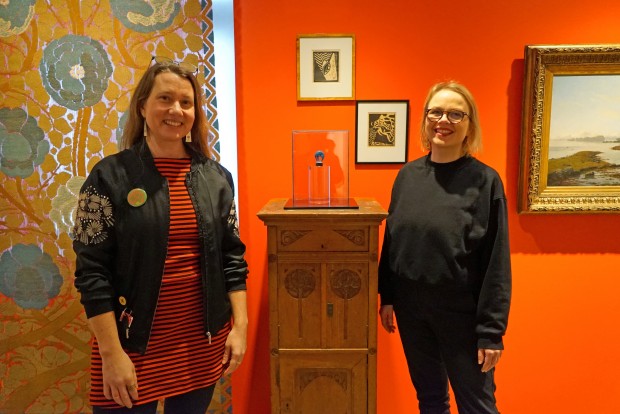
In Spring 2024, she will then work as head-curator of a new exhibition created with Raven Chacon, a Navajo Diné musician and visual artist who has visited Sápmi several times, and has many connections there.
“Sounds are so embedded in indigenous ways, storytelling, working with the sounds of the land that people are a part of. Raven Chacon has a great knowledge of Western music and Indigenous perspectives on music, he's worked with both, composed for symphony orchestras, co-created with Indigenous peers, he is knowledgeable about both perspectives, but he also works as a visual artist. He knows how to bring out stories through music, but also how to transfer them into the visual dimension, and in performative ways. I think there are many impacting elements that he'll be able to bring into this project for Nordnorsk Kunstmuseum.
He will conduct a residency in Lásságami for example, and create two new works in collaboration with Sámi peers. In Bodø he will present the work “Voiceless Mass”, looking at the boarding school experience of Indigenous children, for which he won the prestigious Pulitzer Award in 2022. The exhibition is also a collaboration with Swiss Institute in New York, and will also show there in 2024 thus connecting Indigenous concerns on both sides of the Atlantic.”
I am certainly looking forward to seeing García-Antón’s vision take shape, and hopefully witness her statements come to life in both exhibitions and in the museum’s commitment to sustainability and community-building.